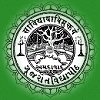-
About us
- About KVK
- About Host institution
- Faculty
- District Profile
- Infrastructure
- Demonstration Units
-
Gallery
- Photo Gallery
- Video Gallery
-
Activities
- Training
- Extension Activities
- FLD/OFT
-
Report
- Annual Action Plan
- Annual Progress Report
- Success Story
-
Publication
- News Latter
- Literature
- NICRA project
- Events
Geographical Information about Valsad District
| Geographical area | 2,947 sq.km. (2,94,412 ha.) | |||||
| Forest area | 87,648 ha. (29.77%) | |||||
| Net cultivable land | 1,63,430 ha. | |||||
| Net irrigated land | 35,363 ha. (21.64 %) | |||||
| Pasture land | 2,461 ha. | |||||
| Soil types Area (ha.) | Black | Medium Black | Alluvial | Saline | Hilly/Laterite | |
| 20,489 | 36,148 | 19,357 | 2,292 | 1,10,421 | 95,590 | |
| Agro Ecological situation | II | |||||
| Average Rainfall | 2,000-2,200 mm | |||||
| No. of blocks/talukas | 6 | |||||
| No. of Villages | 450 | |||||
| Population Density | 561 person / sq.km | |||||
| Total Population | 17,03,068 | Male Population | Female population | SC/ST | ||
| 8,84,064 | 8,19,004 | 47.54% | ||||
| Schedule caste Population | 37,304 | Male | Female | |||
| 18,628 | 18,376 | |||||
| Schedule tribe Population | 7,72,405 | Male | Female | |||
| 3,86,395 | 3,86,010 | |||||
| Literacy rate (%) | 80.94 | Male | Female | Schedule caste | Schedule tribe | |
| 86.48 | 74.96 | 84.70 | 54.80 | |||
| Sex Ratio | 926 female/1,000 male | |||||
| No. of Farmers | 95,996 | Marginal Farmers ( < 1 ha.) | Small Farmers (1-2 ha.) | Big Farmers ( > 2 ha) | ||
| 53,632 | 20,274 | 22,090 | ||||
| Source : C-DAP-Valsad | ||||||


